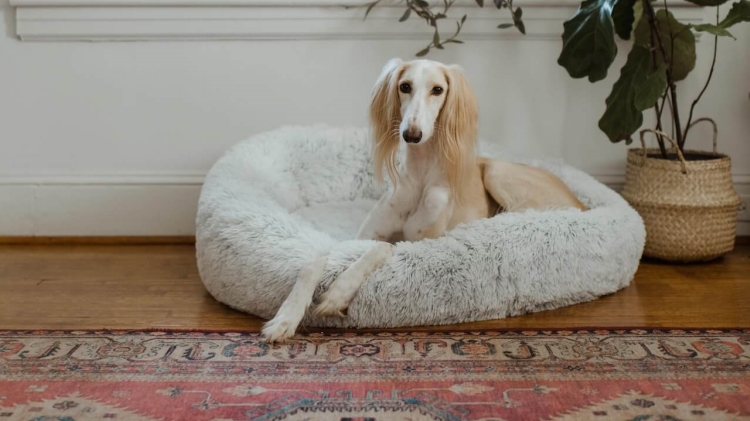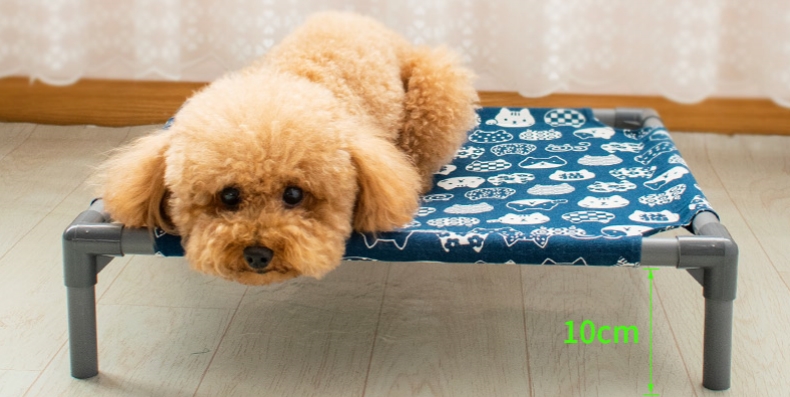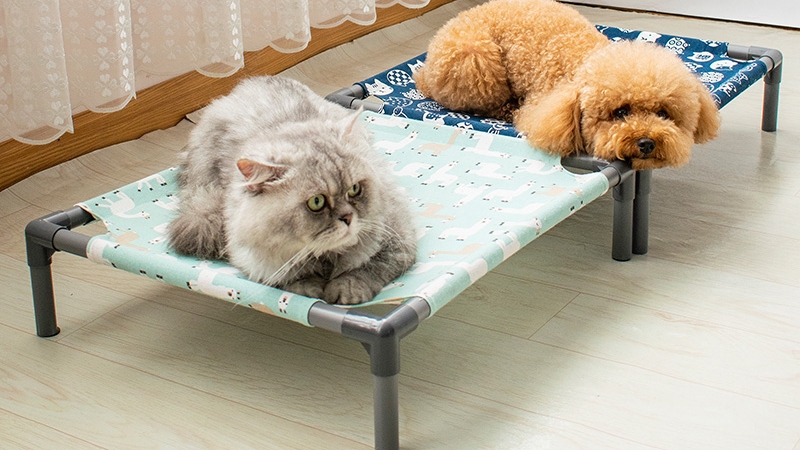
Diy PVC Dog Bed:A Mini Guide
DIY PVC dog bed is a wonderful way to show appreciation to your canine companions, who are undeniably man’s best friends. These loyal pets provide

Elevated dog beds provide many benefits for your pet but also come with some safety considerations. Being aware of potential hazards and taking preventative steps will help keep your dog secure.
Follow this guide to elevated bed safety to protect your furry friend.
When used properly, elevated beds offer many perks:
However, improper use or poor quality can lead to avoidable risks. Putting safety first keeps all the benefits while minimizing any dangers.
The main safety concerns center around elevated heights and improper use:
Like any raised furniture, dogs can potentially slip, trip, or lose their balance and fall off an elevated bed, risking injuries from impact.
Dogs may try to jump on or off an elevated bed. This leaping on and off can lead to strains, sprains, and joint or muscle injuries over time.
If the bed frame is not sturdy or quality construction, it risks buckling or collapsing under the weight of large dogs, leading to injuries.
Dogs who chew may swallow splinters or puncture their mouths on degraded wood or fabrics.
Being aware of these risks is the first step toward prevention.

Use these precautions to minimize any elevated bed risks:
With smart design choices and training, elevated beds can be used safely.
The frame needs to be made of heavy-duty materials that won’t bend or collapse.
Examine the bed’s weight capacity rating and verify it matches your dog’s adult weight. Go bigger to provide a margin of safety.
The platform also needs to provide flawless support without buckling or sagging in the middle from your dog’s weight.
Test the platform yourself prior to your dog using it to confirm adequate strength and stability.

Ramps or stairs allow for safer access minimizing the risk of jumping on or off an elevated bed.
Ramps and stairs should be introduced gradually with treats and praise to positively reinforce using them.
Strategic placement in your home improves safety:
Take measurements to find spacing that reduces risks and contains the bed.
Additional rails and fencing provide security.
Padding reduces impact if accidental contact occurs. But make sure rails don’t create entrapment risks.

Proper supervision ensures safe integration:
With patience, you can train appropriate bed usage to avoid problems.
Use protective adjustments if your dog tries to jump on/off their new bed.
For excessive jumping:
For chewing:
Targeted protection custom-fitted to your dog’s unwanted behavior can curb risks.
Some situations warrant delaying the use of an elevated bed:
Assess your pet’s unique personality and needs to determine appropriate timing.
Look for these hints of discomfort that signal a raised bed may not suit your dog:
When a dog won’t voluntarily use their new bed, it likely doesn’t meet their needs or comfort level.
Use positive reinforcement to teach your dog how to use their new elevated bed properly:
With dedication and persistence, you can instill good elevated bed manners.
If your dog insists on jumping on and off their new bed, manage it carefully:
While not ideal, low-impact jumping can be tolerated in healthy adult dogs without vulnerable conformations. But training them to use ramps or steps is the safest long-term resolution.

There are certain situations and times when removing access to an elevated bed is prudent:
Eliminating environmental risks during transitional periods helps keep your dog secure.
Elevated dog beds offer wonderful benefits but also require extra safety awareness. Select an appropriately supportive size bed for your dog from quality durable materials. Use ramps and stairs to minimize fall risks.
Add padded rails for security. Position the bed thoughtfully. With sensible precautions and training, an elevated bed can provide a comfortable, healthy place for your dog to happily lounge and play.
But stay vigilant and remove access if any concerning behavior or health changes appear that could jeopardize your dog’s safety and security.


DIY PVC dog bed is a wonderful way to show appreciation to your canine companions, who are undeniably man’s best friends. These loyal pets provide

When it comes to ensuring your pet’s comfort, the choice of a dog elevated bed can make a significant difference. In this blog, we delve

The moment you think of a dog elevated bed, the question arises: is it more suitable for a Great Dane or a Chihuahua? This blog

In the quest for the perfect dog elevated bed, pet owners are often faced with a dilemma: foldable or fixed? Each type offers unique benefits,

DIY PVC dog bed is a wonderful way to show appreciation to your canine companions, who are undeniably man’s best friends. These loyal pets provide

When it comes to ensuring your pet’s comfort, the choice of a dog elevated bed can make a significant difference. In this blog, we delve

The moment you think of a dog elevated bed, the question arises: is it more suitable for a Great Dane or a Chihuahua? This blog

In the quest for the perfect dog elevated bed, pet owners are often faced with a dilemma: foldable or fixed? Each type offers unique benefits,
Copyright © 2024 skyrestelevateddogbed. All Rights Reserved.